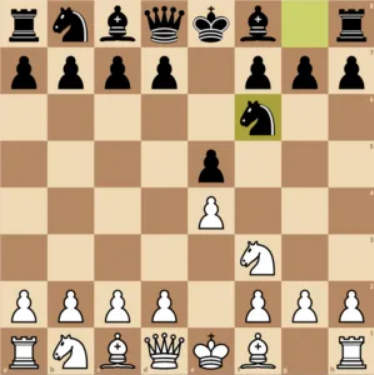
The Petrov Defense, also known as a Russian Game, is a chess opening characterized by the moves:

- e4 e5
- Nf3 Nf6
The opening got its name from Alexander Petrov, a Russian chess player who popularized it in the 19th century.
The idea: Instead of merely defending the e5 pawn, Black wants to counterattack White’s e4 pawn by mirroring the position and moving the knight to f6 hoping for a balanced game.
It is one of the more popular opening games with GMs because of its generally drawish tendencies with a reputation of being an equal and solid defense.
In Petrov Defense, Black avoids a lot of theoretical opening attack lines like: Ruy Lopez, Italian Game and the Scotch Game.
For those players that like to play e5 but don’t like the normal defenses, then this might be a good alternative.
The Petrov Defense can be faced in three different ways based on White’s third move:
[+] Classical Variation (3. Nxe5)
In the Classical Variation, the pawn structure is symmetrical, which causes many people to consider this opening rather dull. Most games at the highest level end in a draw. It also requires lots of theoretical knowledge.
[+] Steinitz Attack (3.d4)
The Steinitz (Modern) Attack is a good option to meet the Petrov Defense because it is not as popular as the Classical Variation. This variation is easy to learn and can be used as a surprise weapon against the Petrov Defense player.
[+] Three Knights Game (3. Nc3)
The Three Knights Game is a good way to surprise your opponent since it is the least played variation against the Petrov Defense by White. The only viable response for Black in order to stay within Petrov’s theory is to bring the bishop to b4. By playing this variation, White usually gains a bishop pair advantage and doubled pawns in exchange.
Watch the video below to get a detailed explanation of the Petrov Defense.






